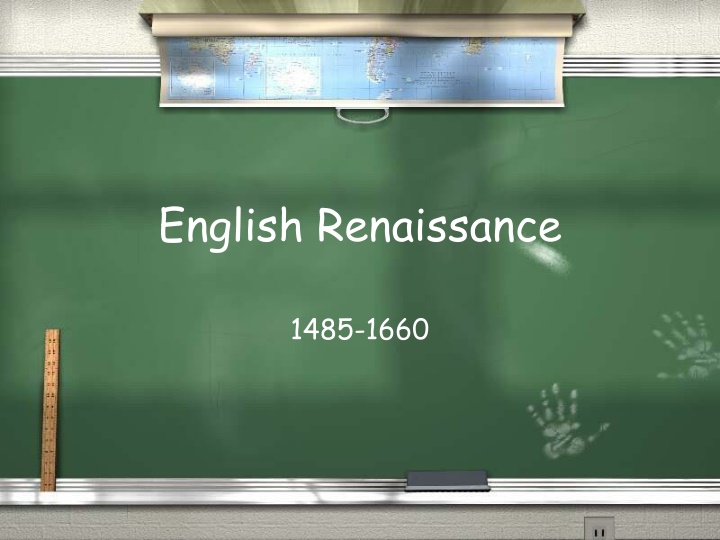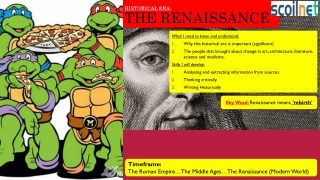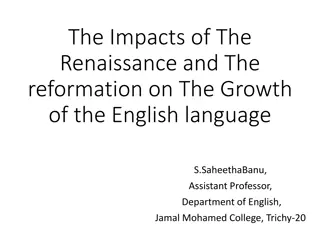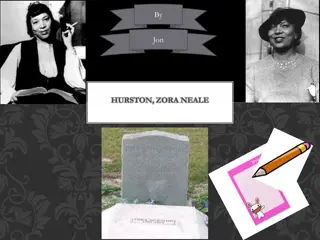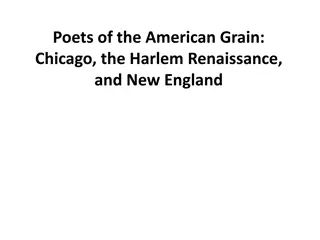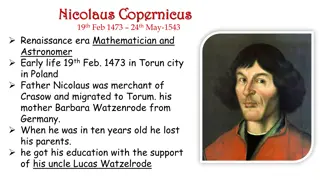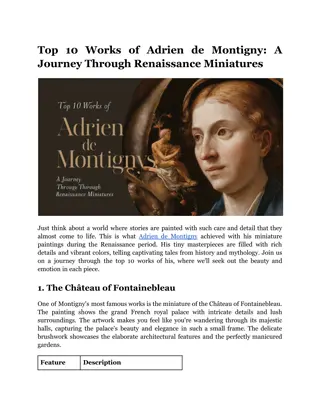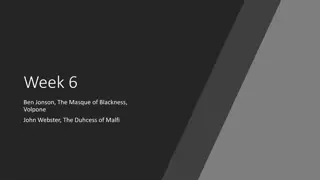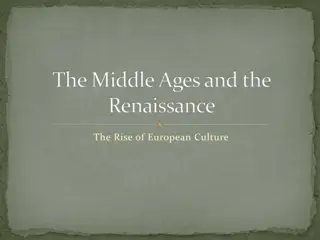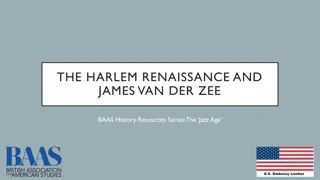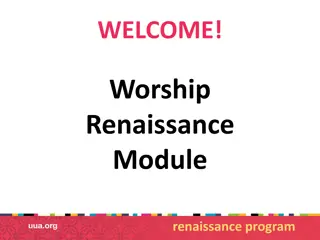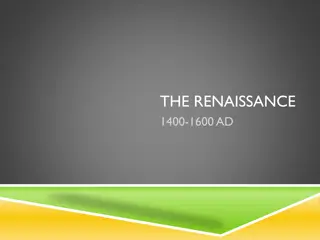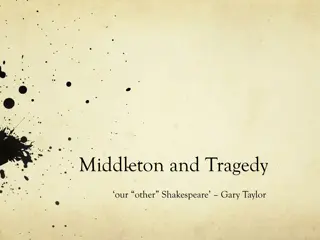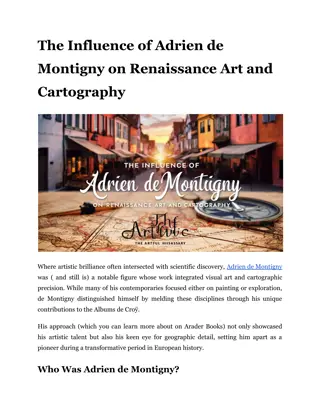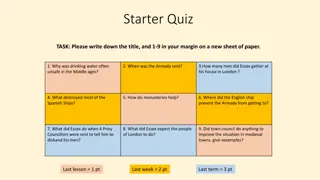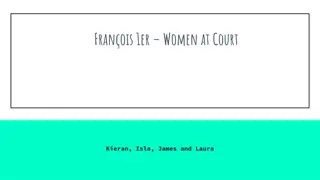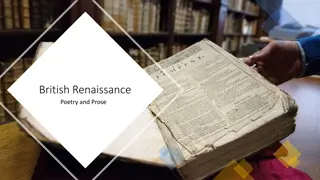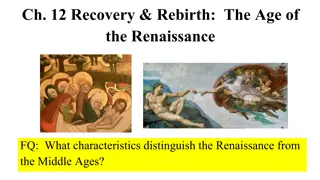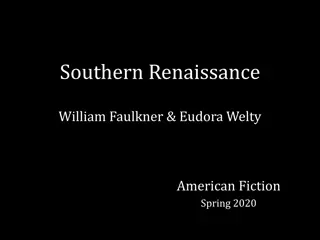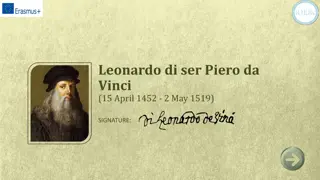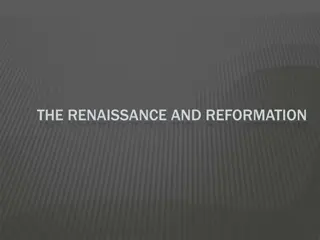English Renaissance
A period of intellectual and artistic revival known as the English Renaissance from 1485 to 1660 flourished under the reigns of Elizabeth I and James I. Humanism, questioning authority, and a shift from religious to secular matters characterized this era, with notable figures like Erasmus and More shaping new perspectives. Originating from Italy in the 14th century, the Renaissance saw a resurgence of ancient Greek and Roman influences, with prominent Italians such as Petrarch, Giotto, and Leonardo da Vinci contributing to the cultural reawakening.
Download Presentation

Please find below an Image/Link to download the presentation.
The content on the website is provided AS IS for your information and personal use only. It may not be sold, licensed, or shared on other websites without obtaining consent from the author.If you encounter any issues during the download, it is possible that the publisher has removed the file from their server.
You are allowed to download the files provided on this website for personal or commercial use, subject to the condition that they are used lawfully. All files are the property of their respective owners.
The content on the website is provided AS IS for your information and personal use only. It may not be sold, licensed, or shared on other websites without obtaining consent from the author.
E N D
Presentation Transcript
English Renaissance 1485-1660
A time of rebirth Two periods: The Elizabethan (1485-1603) The Jacobean (1603-1660)
Elizabeth Period Five monarchs Henry VII (1485-1509) Henry VIII (1509-1547) Edward VI (1547-1553) Mary I (1553-1558) Elizabeth I (1558-1603)
The term Elizabethan Period QuickTime and a TIFF (Uncompressed) decompressor are needed to see this picture. Ruled longer than any other monarch during the Renaissance Attained new heights in world affairs, in art, in literature, in music
The term Jacobean Period Left no heirs Succeeded by son of her cousin Mary, Queen of Scots: James IV of Scotland Became King James I of England Ruled from 1603-1625
Humanism QuickTime and a TIFF (Uncompressed) decompressor are needed to see this picture. New way of looking at the world Questioning of authority and faith Rise of rationalism and skepticism Emphasis from religious to secular matters Great thinkers: Erasmus and More
Renaissance beginning Began in Italy in fourteenth century Was a time of rebirth of intellectual and artistic energies that characterized ancient Greek and Roman civilization
Beginnings (Continued) Famous Italians Petrach and Boccacio, writers Giotto, painter Brunelleschi, architecht Donatelle, sculptor Leonardo da Vinci, Michaelangelo, artists
Lorenzo de Medici (Lorenzo the Magnificent) Encouraged intellectual trends and artistic accomplishments Encouraged the goals of Renaissance Humanism Emphasized the capacities of the human mind and the achievement of human culture QuickTime and a TIFF (Uncompressed)decompressor are needed to see this picture.
Other Renaissance accomplishments in the world Territorial exploration and discovery Columbus in 1492 Sir Thomas More, center of an active and brilliant circle of English Humanists More s Utopia (1516), first literary masterpiece of the English Renaissance Copernicus and Galileo, forerunners of modern astronomy
Protestant Reformation Martin Luther, Ninety-Five Theses, Wittenberg, Germany King Henry VIII, no divorce by Pope Anglican church
Succession after Henry VIII Edward, nine-year-old son Death after five years Half-sister Mary (daughter of Henry and Catherine of Aragon) Half-Spanish and a devout Catholic Reign of terror ( Bloody Mary )
Succession (Continued) Death after five years (1558) Half-sister Elizabeth (daughter of Henry and Anne Boleyn) Twenty-five Accomplished linguist and poet Clever diplomat and shrewd politician
Most powerful nation Defeat of the Spanish Armada in 1588 Smaller and more maneuverable ships Storm Control of the seas
Entertainment First public theater near London in 1576 Closing of theaters in 1593-94 because of plague Public outcry; reopening of theaters
Jacobean Era 1603-1625 King James I King James version of the Bible Puritans, dissenting beliefs
End of Jacobean Era Death in 1625 Ascension of King James I s son Charles Civil war Puritan movement Oliver Cromwell, commander of the Parliamentary forces (Ironsides, Roundheads
End of Jacobean Era (continued) Beheading of Charles I Establishment of Protectorate with Cromwell at the head Military dictatorship 1653-1658 Death of Cromwell (1658)
Restoration of the monarchy Return of Charles II as king (1660) Election of Parliament Beginning of new era
References Adventures in English Literature (1985). United States: Harcourt, Brace Jovanovich Inc. 99-118. Commons.wikimedia.org/wiki/File:Holbein-erasmus2.jpg Commons.wikimedia.org/wiki/Lorenzo_il Magnifico En.wikipedia.org/wiki/Elizabeth_i_of_england The Renaissance 1485-1660. Elements of Literature Sixth Course (1993). United States: Holt, Rinehart and Winston. 165-186. The Renaissance 1485-1660. Elements of Literature Sixth Course (2000). United States: Holt, Rinehart and Winston. 190-212. Unit 3: The Renaissance (1485-1660). McDougal, Littel Literature Purple Level (1985). Evanston, IL: McDougal, Littel. *ICollege Notes (1967) and common knowledge have been using these notes since the mid-eighties with modifications over the course of time! All slides created by JB Hale.
